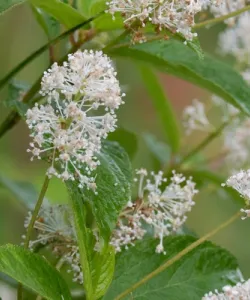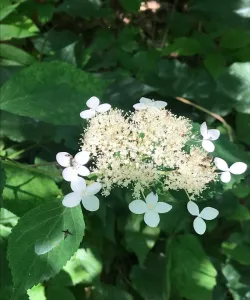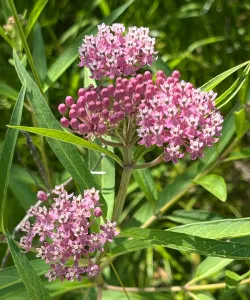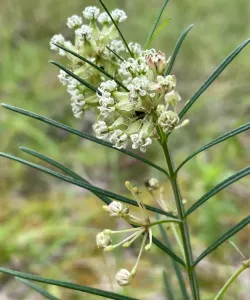Stop Planting Butterfly Bush: You’re Killing The Monarch Butterfly


Want to have the most beautiful yard in the neighborhood? If you want to stand out from the sea of cookie-cutter green lawns, the answer is simple—create a vibrant, native garden that bursts with color year-round and welcomes the fluttering presence of monarch butterflies. What’s cooler than being the house on the street known for its breathtaking flowers and its lively butterfly visitors? Planting native species also supports healthy ecosystems by improving air quality, soil stability, and protection against severe weather.
But if you think planting Butterfly Bush is the way to do it—think again. Despite its appealing name, Butterfly Bush is actually harming the very butterflies you want to attract.
Why Butterfly Bush Is a Problem
Butterfly bushes are often marketed as a must-have for butterfly lovers, but their aggressive growth and potential to disrupt local ecosystems make this a misleading promise. While they do attract butterflies with their nectar, they fail to provide the crucial habitat and food sources needed for their survival. Think of it like giving kids nothing but candy—momentarily satisfying, but ultimately detrimental.
Here’s why Butterfly Bush does more harm than good:
- It’s an invasive species: Butterfly Bush isn’t part of local ecosystems. It spreads aggressively, outcompeting native plants that butterflies and other pollinators rely on for food and habitat.
- It doesn’t support caterpillars: Adult butterflies may visit for nectar, but Butterfly Bush provides no food for their larvae. Without the right host plants, butterflies have nowhere to lay their eggs, meaning fewer future generations.
- It disrupts local biodiversity: Because it doesn’t support a complete butterfly life cycle, it contributes to an ecological imbalance, limiting resources for other pollinators and native wildlife.
- It does not help control the monarch parasite: Unlike certain native milkweed species that can influence the health of monarch butterflies by affecting the virulence and transmission of the parasite Ophryocystis elektroscirrha (OE), Butterfly Bush does not contribute to controlling this parasite. Some native plants may help infected monarchs live longer and reduce the spread of the parasite within local populations.

Why Native Host Plants Matter
If you truly want to help butterflies, you need to plant native host plants—plants that provide food for caterpillars and serve as a foundation for a thriving butterfly population.
For example, monarch butterflies rely exclusively on milkweed as their host plant. Without milkweed, monarch caterpillars have nothing to eat, and monarch populations decline. But it’s not just monarchs—native plants support a wide range of butterfly species, along with bees, birds, and other essential pollinators. Pollinators play a critical role in the reproduction of flowering plants, which supports food production and overall environmental health.

Native Alternatives to Butterfly Bush
The good news? There are plenty of beautiful, native plants that provide nectar for adult butterflies and serve as host plants for their larvae. These plants will make your garden a true butterfly haven while also benefiting the entire ecosystem. Creating a pollinator garden with native plants not only provides food and habitat for butterflies, caterpillars, and other wildlife but also helps prevent the disruption of local ecosystems caused by invasive species like butterfly bushes.
Native Plants for Sunny Spots

New Jersey tea is a resilient and attractive native shrub that features clusters of tiny, fragrant white flowers, which create a striking contrast against its dark green foliage. The plant's roots go deep, allowing it to thrive in dry, challenging conditions and making it an excellent choice for erosion control. It's particularly appealing in a native plant garden or as part of a low-water landscape, where its ability to attract butterflies and beneficial insects adds ecological value.

Shrubby St. John's Wort is a small, dense shrub that typically grows 2 to 4 feet tall and wide. It boasts a profusion of bright yellow, star-shaped flowers throughout the summer, which are highly attractive to pollinators such as bees and butterflies. The flowers are followed by small, woody seed capsules that provide visual interest in the fall and winter. The shrub's bark is another appealing feature, exfoliating in thin layers to reveal a rich, textured surface. Shrubby St. John's Wort thrives in full sun to partial shade and prefers well-drained soils. It is particularly valued for its drought tolerance and low maintenance needs, making it suitable for xeriscaping, pollinator gardens, and foundation plantings.

Virginia Sweetspire is a versatile and attractive shrub that typically grows 3 to 5 feet tall and wide. Its most striking features are the long, drooping clusters of small, fragrant white flowers that bloom in late spring to early summer. These flowers not only add a sweet scent to the garden but also attract a variety of pollinators, including butterflies and bees. Following the flowering period, the glossy green leaves turn a vibrant burgundy-red in the fall, providing extended visual interest. Virginia Sweetspire is ideal for mass plantings, borders, and woodland gardens due to its tolerance for a variety of conditions, including wet soils and partial shade.
Native Hydrangeas for Shade

Wild Hydrangea, also called Smooth Hydrangea, is a versatile and hardy native shrub that typically grows 3 to 5 feet tall and wide, with a rounded habit. The shrub produces large, rounded flower heads consisting of numerous small, creamy white blooms from early to mid-summer. These flowers are not only aesthetically pleasing but also attract and support butterflies and bees. After the flowering period, the blooms may turn a pale green, adding further interest throughout the season. Wild hydrangea thrives in partial shade, preferring moist, well-drained soils rich in organic matter. It is an excellent choice for underplanting larger trees, filling out shaded borders, or creating naturalized drifts along woodland edges.
How to Create a Pollinator-Friendly Garden
Transforming your yard into a pollinator paradise is easier than you think. By planting a diverse selection of native plants and avoiding pesticides, you can provide year-round support for butterflies, native bees, and other pollinators. Honey bees, as key pollinators, significantly contribute to agricultural productivity and the global economy, making their health crucial for supporting ecosystems and food production.
Simple Tips for a Butterfly-Friendly Yard:
- Plant a variety of native flowers that bloom at different times to provide food throughout the growing season.
- Include host plants like milkweed for monarchs or violets for fritillary butterflies to support their entire life cycle.
- Prioritize nectar-rich flowers such as coneflowers, black-eyed Susans, and asters.
- Avoid pesticides, which can be harmful to butterflies and other pollinators.
- Provide water and shelter—add a shallow dish of water for butterflies and include features like logs and rocks for resting.
- Recognize the role of small mammals in the ecosystem, as they contribute to pollination and biodiversity, helping to maintain healthy landscapes.
Native Milkweeds for Monarchs
Want to support monarch butterflies? Here are some milkweed species to plant:

Milkweeds are the only host plant for the Monarch butterflies, meaning caterpillars can only eat milkweed plants. Swamp Milkweed, also called Red Milkweed or Marsh Milkweed, is a great choice for the garden as it is the among the easiest milkweeds to grow and is very well behaved. It grows in average or wet conditions and does not spread like common milkweed. It's one of the top milkweeds for attracting monarch caterpillars. Swamp Milkweed is covered in deep pink flowers in midsummer that attract monarch, milkweed bugs, and many more pollinators.

Butterfly Milkweed (also often called simply Butterfly Weed) is one of the few North American native perennials with orange flowers. Its deep green leaves, short stature, and interesting seed pods lend interest throughout the season. As a milkweed, this is one of the only hosts for monarch butterflies and will give their caterpillars something on which to feed. Slow growing and late to emerge in the spring, Butterfly Milkweed is long-lived and drought tolerant once established. Butterfly Milkweed will not persist for many years in moist spots, however, as it is adapted to dry environments.

Whorled Milkweed is unique within the milkweed family. Unlike many of its cousins, it's a short plant with fine, feathery foliage that adds a soft texture to the garden. The delicate white flowers are intensely fragrant and attract an abundance of pollinators. Monarch Butterflies lay their eggs on the foliage, so check the plants for caterpillars in the summer. This plant may get orange oleander aphids or large milkweed bugs near the end of the summer, but they won't do lasting damage. Whorled Milkweed can spread, but not aggressively, and it is able to gently fill in the spaces between other plants.

Aquatic Milkweed is a vital plant for native and waterwise gardens, thriving in moist to wet environments. It typically grows to a modest 2 feet in height and features lance-shaped, glossy leaves. From late spring to early summer, it produces small, fragrant white flowers that serve as an important nectar source for bees, butterflies, and other pollinators. Like other milkweeds, this plant is especially crucial for monarch butterflies, serving as a host plant on which their caterpillars feed.
Ready to Make Your Yard the Envy of the Neighborhood?
By replacing invasive plants like Butterfly Bush with native species, you can create a standout landscape filled with year-round color and essential habitat for pollinators. Not only will your garden be more beautiful, but it will also play a crucial role in protecting butterfly populations and maintaining a healthy local ecosystem.
Our team can design a custom garden plan that features stunning native alternatives to Butterfly Bush, ensuring your landscape stands out while supporting local pollinators. Additionally, explore My Home Park’s plant glossary to learn more about native species that will make your garden a butterfly haven and a true neighborhood showpiece. Our team of experts can help you choose the best plants for your space and ensure your garden thrives.

Share this article


